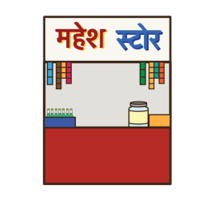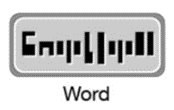Knowledge Base
Content
- Implementing AAC
- Rationale and Conceptual Framework
- Key Definitions
- Relevance and Challenges for AAC Implementation
- UNICEF Europe and Central Asia (ECAR) Approach
- Assessing Country Readiness
- 1. Defining Scope and Stakeholders
- 1a. Starting Point
- 1b. Identifying a Core Partner
- 1c. Identify Stakeholders
- 1d. Identify International Partner
- 1e. Establish Core Project Team and Partners
- 1f. Associate Stakeholders with Activities
- 1g. Develop a Project Plan
- 1h Summary
- 2. Making Symbol Choices
- 2a. Creating an AAC Forum
- 2b. Choosing a Symbol Set
- 2c. Language and Vocabularies
- 2d. Defining a Core Vocabulary
- 2e. Selection of New Symbols for Design
- 2f. Development of Symbols by Local Graphic Designer
- 2g. Voting on Newly Designed Symbols
- 2h. Publishing the new Symbol Set with Language Translations
- 2i. Integration of the New Symbol Set with AAC Applications (Cboard)
- 2j. Summary
- 3. Capacity Development
- 3a. Selection of Participants and Skills Audit
- 3b. Planning Training Delivery
- 3c. Mapping Skills Audit outcomes to Training Content
- 3c. Example - Modules and Topics based on AAC Themes
- 3c. Example - Croatia: Adapted Translated Modules
- 3d. Development and Adaptation of Training Materials
- 3d. Example - AAC Modules based on the first 3 European Qualifications Framework Levels.
- 3d. Example - Bulgaria: Adapted training modules
- 3e. Training Material Considerations
- 3f. Mentoring
- 3g. Training Evaluation
- 3g. Example – Initial Evaluation to Plan for Further Needs - finish
- 3g. Example – 3-6th month evaluation survey and trouble shooting example - finish
- 3h. Summary
- 4. AAC Symbol Set Design
- 4a. Symbol Types
- 4b. Cultural Nuances seen in Symbols
- 4c. Cultural Appropriateness at different Levels
- 4d. Co-Production and Participatory Design
- 4e. Practicalities of Symbol Design
- 4f. Symbol Set Schemas
- 4g. Summary
- 5. Introducing Tech AAC
- 5a. Different Levels of AAC Tech
- 5b. AAC Vocabularies
- 5c. AAC Communication Boards
- 5d. Introduction to Board Builder and using Symbol Creator
- 5e. Different Technologies for Different uses.
- 5f. Adding access technology to an AAC device
- 5g. Open Design and Development
- 5h. Summary
- 6. AAC Application Use
- 6a. Introduction to Cboard
- 6a. Example - Serbia: Cboard successfully introduced to a 4 year old.
- 6a. Example - Croatia: Installing and Using CBoard videos
- 6a. Example - North Macedonia: installing and using Cboard on a Mobile Phone
- 6b. Text to Speech solutions and different languages
- 6b. Example - Croatia and Serbia: Text to speech brings positive results
- 6b. Example - North Macedonia: Suze, a new Female Voice
- 6c. Interface Localisation where translations are needed.
- 6d. Establishing local testing processes – AAC Forum
- 6e. Providing Feedback and Evaluation as ongoing Processes
- 6e. Example - Croatia, Serbia and Montenegro: Positive PIADS Evaluation Results
- 6e. Example - Montenegro: Evaluating enhanced verbal and social outcomes
- 6e. Examples of other types of evaluation
- 6f. Summary
- 7. Supporting Families
- 7a. Understanding Needs of Families and Carers
- 7b. Early Intervention Strategies at Home
- 7c. Family and Carer Involvement – Plan for Progression
- 7d. Summary
- 8. Appreciating Long Term Results
- Global Symbols FAQs
- Changing the language of the site and symbol labels
- Adding a language translation to a symbol set
- Adding Esperanto and Dari languages
- Forgotten password
- Skin and hair tones on Mulberry and OpenMoji Symbols
- Instructions for Global Symbols, Board Builder and Symbol Creator
- Board Builder & Symbol Creator AI
- PDF download on Board Builder
- Symbol Creator AI Instructions
- Symbol Creator AI Text Prompt Guidance for Generative AI AAC Symbols
- Symbol Designer Instructions (previously known as Symbol Creator)
- AAC Symbol Design Guidelines
- Training
4e. Examples of Symbol Design and Content
Updated by Global Symbols with UNICEF ECARO

- Content of symbols – consider complexity and use e.g. Photos with symbols, Visual Scene Displays or for activities, different tenses and number.
- Distraction or attraction?
- Symbol isolation and understanding?
All these issues will depend in the AAC user and the setting.

Black and white / high contrast mode for visual impairments, use on posters and other settings.

Text within the image? Possibly use a ‘faux’ word so it works for any language


